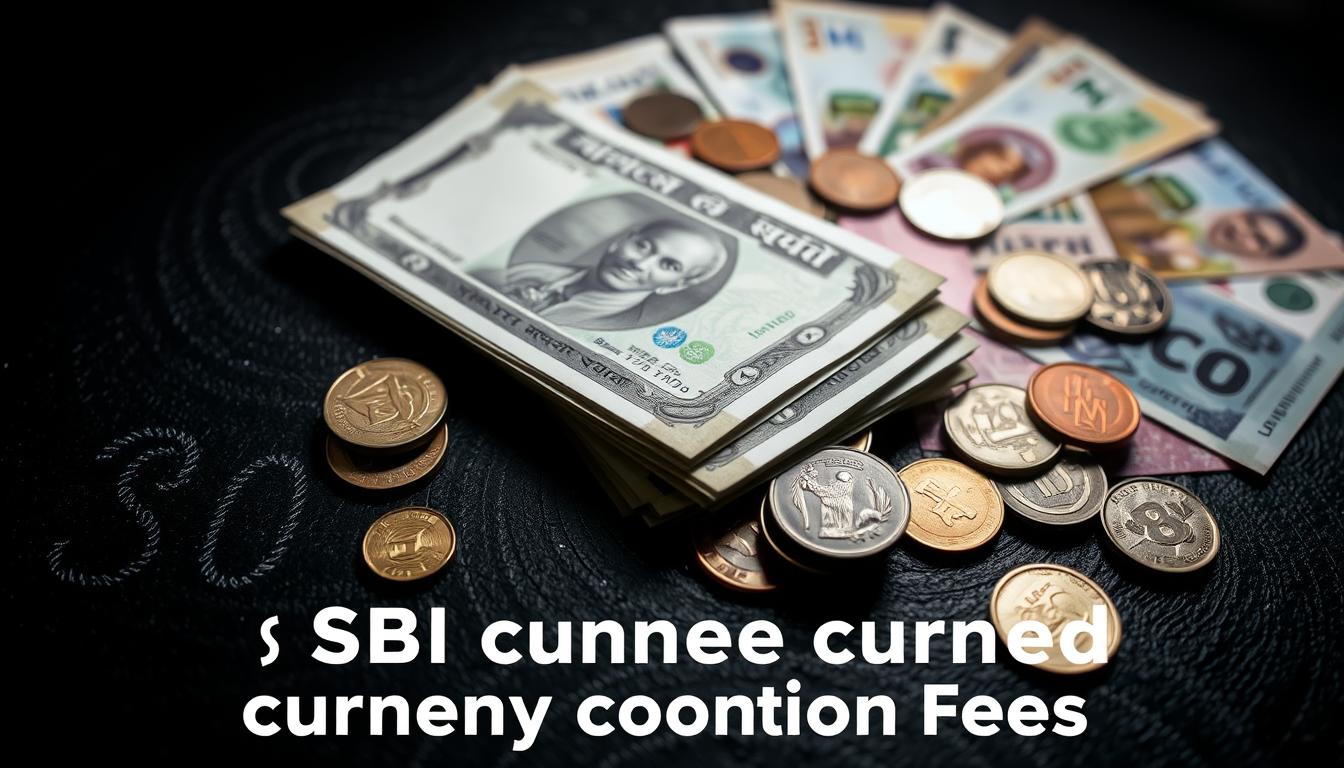Did you know that over $100 billion is sent abroad from India annually? With such a massive volume of international transactions, understanding the costs involved is crucial. The State Bank of India, as the country’s largest bank, plays a significant role in facilitating these transfers. However, navigating its fee structure can be complex.
Whether you’re a business or an individual, knowing how exchange rates and additional costs impact your remittances is essential. This guide provides a comprehensive analysis of the bank’s approach to currency conversion, ensuring transparency and helping you make informed decisions.
By the end of this article, you’ll have a clear understanding of how to send money cost-effectively and explore alternative solutions for better savings.
Key Takeaways
- Learn about the fee structure for international transactions.
- Understand the importance of transparency in costs.
- Discover how India’s largest bank impacts forex services.
- Gain insights into cost-effective remittance strategies.
- Explore comparative solutions for better savings.
Introduction to SBI and Currency Conversion
Since its inception in 1806, the State Bank of India has played a pivotal role in shaping India’s banking landscape. Originally established as the Bank of Calcutta during the British colonial era, it has grown into the country’s largest financial institution. Today, it operates over 20,000 branches globally, making it a trusted name for international money transfers and remittance services.
The bank’s extensive network allows it to facilitate transactions in 91 currencies, catering to individuals and businesses alike. However, the Reserve Bank of India (RBI) imposes certain restrictions, such as a $2,000 USD private limit on foreign currency holdings. To streamline operations, SBI has established specialized Forex-approved branches in Tier 1 cities, ensuring efficient handling of international transactions.
Currency conversion in banking systems works by adjusting the value of one currency to another based on prevailing exchange rates. This process is essential for sending money India to abroad or receiving funds from overseas. Understanding this mechanism helps users make informed decisions and optimize their transactions.
- Legacy: SBI’s roots trace back to the British colonial era, making it a cornerstone of India’s financial history.
- Global Reach: With 20,000+ branches worldwide, it offers unparalleled access to international banking services.
- Regulatory Framework: RBI’s $2,000 USD private limit ensures controlled foreign currency holdings.
- Specialized Services: Forex-approved branches in Tier 1 cities enhance transaction efficiency.
- Mechanism: Currency conversion adjusts values based on current exchange rates.
Understanding SBI Charges for Currency Conversion Fees
Managing international transactions efficiently requires understanding the associated costs. When sending money abroad, the fees involved can vary significantly based on the method and amount of the transfer. This section breaks down the fee structure and factors that influence these costs, helping you make informed decisions.
Types of Fees
The fee structure for international transactions is divided into three main categories: branch services, online remittance, and card reloads. Each category has its own pricing model:
- Branch Exchange Fees: These are variable and depend on the amount being transferred. Larger transactions may incur higher fees.
- Online Remittance: A flat fee of ₹250 is charged for online transfers, making it a cost-effective option for smaller amounts.
- Travel Card Reload: Fees for reloading travel cards range between ₹100 and ₹50, depending on the service provider.
Factors Influencing Fees
Several factors can impact the total cost of your transaction. These include:
- Transaction Size: Percentage-based charges apply to larger transfers, increasing the overall cost.
- Regulatory Factors: Compliance with FATCA and RBI oversight can add to the complexity and cost of transactions.
- Hidden Costs: Exchange rate markups can significantly affect the final amount received by the beneficiary.
Understanding these factors can help you minimize costs and choose the most efficient method for your needs.
Current Exchange Rates at SBI
Understanding the dynamics of exchange rates is crucial for anyone involved in international transactions. These rates determine how much one currency is worth in relation to another, directly impacting the cost of sending money abroad. The State Bank of India updates its rates daily, ensuring transparency and accuracy for its customers.
For instance, as of today, the INR/USD rate for online transfers up to $10,000 is 87.09. Similarly, the rate for transfers to Bangladesh stands at 121.50 BDT/USD. These rates are influenced by various factors, including market demand, geopolitical events, and economic policies.
How Exchange Rates are Determined
SBI’s daily rate-setting mechanism is based on the interbank market rates, with a markup ranging between 0.3% and 0.5%. This markup covers operational costs and ensures the bank remains competitive. Here’s a breakdown of how these rates are structured:
- Mid-Market Rates: The baseline rates derived from global currency markets.
- Competitor Rates: SBI adjusts its rates to stay competitive with other financial institutions.
- Transfer Amounts: Larger transactions often benefit from more favorable rates due to economies of scale.
Geopolitical factors, such as trade agreements or political instability, can also cause fluctuations in exchange rates. For example, a real-world conversion of ₹1 lakh to USD might show a difference of $15.66 based on the prevailing rate. This highlights the importance of monitoring current exchange trends before initiating a transfer.
How to Send Money with SBI
Sending money internationally has become easier with modern banking solutions. Whether you prefer the convenience of online banking or the personalized service of a branch, understanding the options available can help you make the best choice for your needs.
Online vs. In-Branch Transactions
When it comes to transfers, SBI offers both online and in-branch services. Each method has its own advantages and limitations. For instance, the YONO SBICA app allows for zero-fee transactions, making it a cost-effective option for smaller amounts. On the other hand, in-branch services are ideal for larger transactions, with a higher transaction limit of $50,000 compared to the $25,000 mobile limit.
Step-by-Step Guide for YONO SBICA App Transactions
- Download and install the YONO SBICA app from your device’s app store.
- Log in using your credentials and navigate to the transfers section.
- Enter the recipient’s details and the amount you wish to send.
- Review the transaction details and confirm the transfer.
Documentation Requirements for Large Branch Transfers
For larger transactions conducted at a branch, additional documentation may be required. This includes proof of identity, proof of address, and details of the recipient’s bank account. Ensuring you have all necessary documents can expedite the process.
Security Protocols in Digital vs Physical Channels
Both digital and physical channels prioritize security. Online transactions are protected by advanced encryption and two-factor authentication. In-branch services rely on physical verification and secure handling of documents.
Processing Time Comparison: Instant vs 24-72 Hours
Online transfers via the YONO SBICA app are typically instant, providing immediate access to funds. In contrast, in-branch transactions may take between 24 to 72 hours, depending on the destination and regulatory requirements.
Special Requirements for GBP/EUR Transfers
Transfers involving GBP or EUR may have additional requirements, such as specific forms or higher scrutiny. It’s advisable to check with the branch or online platform for any special instructions before initiating the transfer.
Benefits of Using SBI for Currency Conversion
Choosing the right financial institution for international transactions can significantly impact your costs and efficiency. With its extensive network and specialized services, the bank offers several advantages for individuals and businesses alike.
One of the standout features is the competitive exchange rates. For transfers above $10,000, the rate is set at 87.29 INR, ensuring cost-effectiveness for large transactions. This makes it an ideal choice for corporate clients who need to handle bulk transfers efficiently.
Another key advantage is the integrated banking solutions for NRI accounts. These services simplify money transfers and provide seamless access to funds, making it easier for non-resident Indians to manage their finances.
Regulatory compliance is also a major benefit. The bank adheres to all guidelines set by the Reserve Bank of India, ensuring secure and transparent transactions. This compliance is particularly important for international transfers, where regulatory scrutiny is high.
For frequent travelers, the multi-currency travel card is a valuable tool. It allows users to load multiple currencies onto a single card, reducing the need for constant conversions and saving on fees.
Finally, same-day clearance for transfers within the bank’s network ensures quick access to funds. This feature is especially useful for urgent transactions, providing peace of mind to users.
- Bulk Transfer Advantages: Ideal for corporate clients handling large transactions.
- Integrated Solutions: Simplified banking for NRI accounts.
- Regulatory Assurance: Compliance with RBI guidelines for secure transactions.
- Travel Card Benefits: Multi-currency support for frequent travelers.
- Quick Clearance: Same-day processing for internal transfers.
Limitations and Considerations
Navigating the complexities of international transactions requires awareness of regulatory constraints. These rules ensure transparency and security but can also pose challenges for users. Understanding these limitations helps in planning and executing transactions efficiently.
Key Regulatory Challenges
One major constraint is the Liberalized Remittance Scheme (LRS) limits. This scheme allows individuals to send up to $250,000 annually for permissible transactions. However, exceeding this limit requires additional documentation and approvals, adding complexity to the process.
Another challenge is the documentation requirements for non-account holders. These individuals must provide detailed proof of identity, address, and the purpose of the transaction. This can delay the process, especially if the documents are incomplete or unclear.
Operational Restrictions
Third-party transfers are another area with strict RBI policies. Transfers can only be made to immediate family members, and even then, specific documentation is required. This restriction aims to prevent misuse of the system but can be inconvenient for users.
Currency surrender requirements also apply. Any unused foreign currency must be surrendered within 60 days of purchase. Failure to comply can result in penalties, making it essential to plan transactions carefully.
Tax Implications
GST on forex transactions is another factor to consider. While essential services like education and medical treatment are exempt, other transactions may attract GST. Understanding these terms helps in budgeting and avoiding unexpected costs.
- LRS Limits: Annual cap of $250,000 for permissible transactions.
- Documentation: Strict requirements for non-account holders.
- Third-Party Transfers: Restricted to immediate family members.
- Currency Surrender: Unused forex must be surrendered within 60 days.
- GST: Applicable on certain forex transactions.
For more details on compliance, refer to the RBI circulars for updated guidelines. Being informed about these constraints ensures smoother and more efficient international transactions.
Exploring Alternatives to SBI for Currency Conversion
When it comes to international transactions, exploring alternatives can lead to significant savings and better services. While traditional banks offer reliability, newer platforms provide competitive rates and innovative features. Understanding the options available helps users make informed decisions.
Comparing Costs and Benefits
Traditional banks often charge markups of 0.3% to 0.5% on exchange rates, which can add up for large transactions. Fintech platforms, on the other hand, offer lower fees and real-time rate alerts. For example, Wise provides mid-market rates with minimal markups, making it a cost-effective choice for money transfers.
Karbon FX stands out for its SME-focused forex solutions. It offers tailored services for businesses, ensuring compliance with both RBI and FCA regulations. This dual compliance makes it a reliable option for companies engaged in international trade.
- Cost Comparison: Traditional banks vs fintechs vs neo-banking platforms.
- Karbon FX: Competitive edge in SME forex solutions.
- Digital Platforms: Rate alerts and lower fee structures.
- Compliance: RBI vs FCA regulations.
By comparing these options, users can choose the best platform for their needs, ensuring transparency and cost-effectiveness in every transaction.
Tips for Minimizing Currency Conversion Fees
Strategizing your international money transfers can lead to significant savings and better efficiency. By understanding the nuances of exchange rates and leveraging smart tactics, you can reduce costs and optimize your transactions.
One effective method is to use exchange rate alerts. These notifications help you monitor fluctuations and transfer funds when rates are most favorable. Additionally, consolidating bulk transfers can help you hit rate tiers, often resulting in lower fees.
Timing is another critical factor. Rates tend to fluctuate during weekends due to market inactivity. Transferring funds on weekdays can often yield better results. Forward contracts are another valuable tool, allowing you to lock in rates for future transactions and avoid unfavorable shifts.
For businesses, combining personal and corporate transfers can streamline operations and reduce costs. Tax-efficient structuring methods can also help minimize expenses, ensuring compliance while maximizing savings.
- Optimal Transfer Amounts: Consolidate funds to hit rate tiers and reduce fees.
- Forward Contracts: Lock in rates to avoid unfavorable fluctuations.
- Combined Transfers: Merge personal and business transactions for efficiency.
- Tax Efficiency: Structure transfers to minimize tax liabilities.
- Weekday Transfers: Avoid weekend rate volatility for better outcomes.
Finally, don’t underestimate the power of negotiation tactics. For large transactions, discussing fees with your financial institution can lead to better terms. By implementing these strategies, you can ensure cost-effective and efficient international money transfers.
Conclusion
Making informed decisions about international transfers requires a clear understanding of costs and benefits. This guide has highlighted key fee structures and rate determinants, empowering users to optimize their financial planning.
For large institutional transfers, the bank’s strengths lie in its competitive rates and robust compliance framework. However, individual users should conduct a cost analysis to determine the best approach for their needs.
Looking ahead, potential changes in RBI’s forex policies may impact transaction processes. Staying updated on these developments is crucial for seamless send money India operations.
Finally, periodic audits of currency conversion fees can help identify savings opportunities. By staying proactive, users can ensure cost-effective and efficient international transactions.







